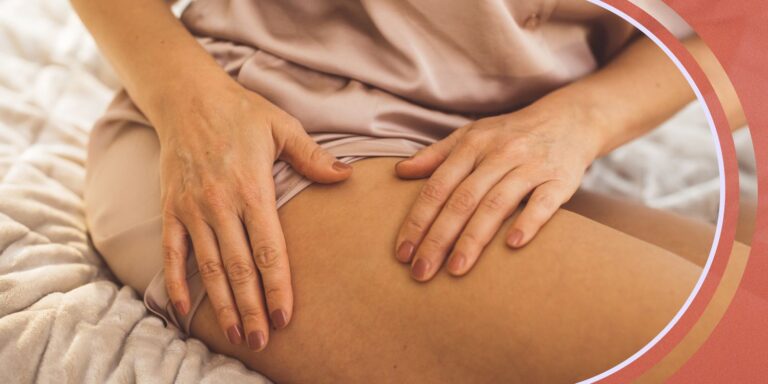Cellulite is very common — among 80 and 90 percent of all women past puberty have developed it — and yet, it’s still an area of insecurity for so many. And while there are more than a handful of skin tightening creams and lotions that promise to reduce the appearance of cellulite, none of them actually work. They may help to slightly reduce the appearance of some blemishes and smooth out uneven texture, but they cannot penetrate the necessary layers of skin and reorganize the zones that cause cellulite in the first place.
The only treatments that can target and treat cellulite are in-office treatments and a few select at-home radiofrequency devices. And while some have been around for quite some time, there’s a whole new range of treatments that can help people achieve the smooth legs and dimples of their dreams.
Below, experts share the new types of cellulite treatments available and break down how they work.
Recombinant enzymes
It’s not very often that a breakthrough is described as revolutionary in the medical world, but Marisol Saavedra, MDMBA, a London-based aesthetic doctor uses this word to describe how recombinant enzymes work to treat cellulite.
He explains that they were developed through a specific recombinant technology process and uses a combination of three enzymes: collagenase, lipases and hyaluronidase. Together, they smooth, tighten, thin and drain localized areas.
Dr. Saavedra says treatment begins with a standard patient scan where they take photos of the treatment areas and circle the areas to be injected. “This treatment causes mild to moderate pain, so we apply numbing cream to the treatment area for about five to 10 minutes before the injections while we prepare the enzymes,” he says. Then, after the area is disinfected, the doctor will inject them with a tiny needle.
After treatment, Dr. Saavedra says it’s normal to have mild bruising and swelling for up to five days. For best results, patients usually need three to six sessions once a week. “The results are visible after the first treatment session and are long-lasting,” he adds.
Aveli
Forget the idea of having to go to your plastic surgeon’s or dermatologist’s office multiple times to see results. Aveli is an FDA-cleared and minimally invasive treatment that reduces the appearance of cellulite in just one treatment.
Sadyk Fayz, PA-Cboard certified Aesthetic Physician Associate based in Manhattan at Beso Aesthetics, explains that it works by cutting the bands of connective tissue that pull on the skin and create cellulite dimples via a hand-held device. It is what is used for treatments like AirSculpt Smooth.
“Our patients have an initial consultation with one of our surgeons to determine candidacy and identify areas for treatment. Once a procedure is booked, it couldn’t be easier. During the pre-op, patients receive local anesthesia. The procedure, our patients are awake the entire time, chatting with the nurses and surgeons and listening to their favorite playlist,” says Aaron Rollins, MD, founder of AirSculpt Technologies. “Our procedure is to create a very small entry point that is the size of a freckle. There are no needles, scalpels or stitches, and our patients are back to work in 24-48 hours.” And once the swelling goes down, the results are immediate.
QWO
As the first and only FDA-approved injectable for cellulite, this treatment made waves. Board Certified Dermatologist, Kim Nichols, MD, previously explained in With style that QWO is an enzyme that, in liquid form, breaks down collagen in the fibrous bands, which are the bands under the skin that pull down subcutaneous fat and cause cellulite. Therefore, QWO’s enzyme works by targeting the accumulation of collagen in these zones.
Board-certified dermatologist, Bruce Katz, MD, of JUVA Skin and Laser Centerhe has also stated in the past that QWO requires three sessions and that each session lasts about 10 minutes, depending on how many injections are required.
Currently, QWO is only FDA approved for the buttock area. However, both doctors say it can be used off-label to treat cellulite in other areas of the body, such as the thighs and stomach. And while the treatment is advertised as relatively painless, there have been reports of bruising lasting longer than your typical bump as the enzymes break down the fibrous bands, the small veins around them are hit and bruised.


